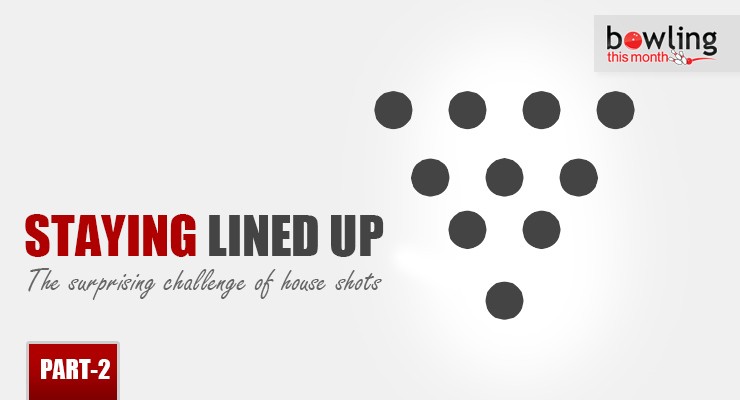Last month, I introduced a decision-making framework (see Decision Flow Chart) to help bowlers deal with changing ball reaction as lanes transition. This month, we will be applying that framework to ‘house shots’. They come in all shapes and lengths and, while they are generally high scoring, they can’t all be attacked the same way. Even more importantly, they don’t all break down the same way.
I mentioned at the end of the last article that house shots can be challenging despite the general assumption that they are easy. I’ll explain that statement a little later, but first I want to touch on two key elements of the decision-making process: what happened (ball reaction) and the adjustment decision.
The adjustment
We’ll start at the end of the decision-making process since that deals with your equipment and physical abilities. According to the framework, you will make your adjustment decision by selecting from your own preferred adjustments and physical tools. Those tools are your bowling balls.
Last month, I gave a brief overview of the variety of balls necessary to give different reaction shapes and maximize your options. I wanted to go into a few more specifics this month as this will relate to selecting equipment. Let us suppose, for example, that your analysis leads you to the conclusion you need to create more length and sharper backend. A ball change is a possibility but only if you’ve got the equipment to do so.
Let’s put it this way. I usually use a sanded ball on the fresh house shot in my local league and move to pearlized balls that have a sharper breakpoint shape as the lanes break down. Notice that I did not refer to how much each ball hooks. Like most bowlers, I will usually move left as the lanes break down and create more axis rotation as I do so but at a certain point it is simply more effective to change balls. By going beyond that point, I’m forced to not only go past my own physical comfort zone but also beyond the sanded ball’s effectiveness.
I mentioned in the last article that a variety of balls is necessary to best cope with changing lane conditions. Refer to the ‘House ...
This article is only available to Bowling This Month subscribers. Click below to get instant access to this article and all of our other premium instructional content.
Subscribe to Bowling This Month
Already a Bowling This Month subscriber? Click here to log in.
